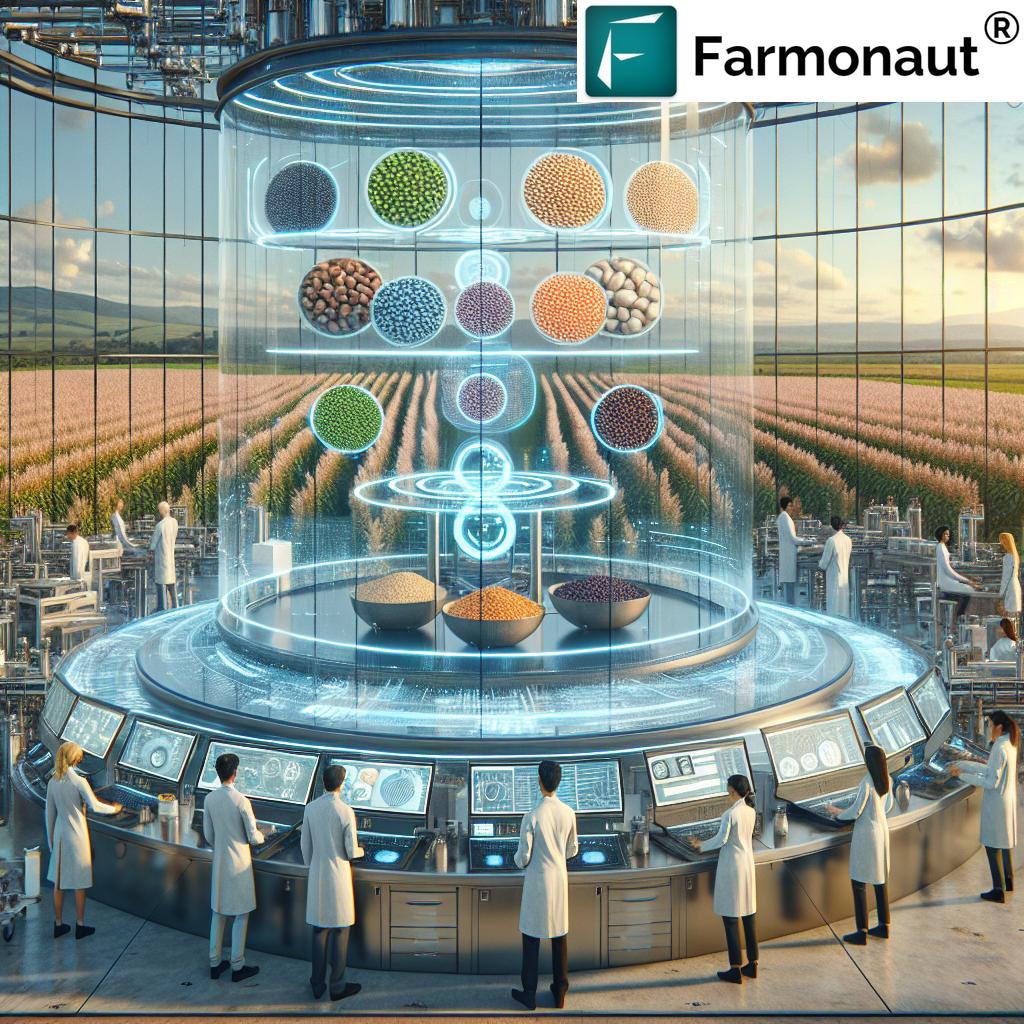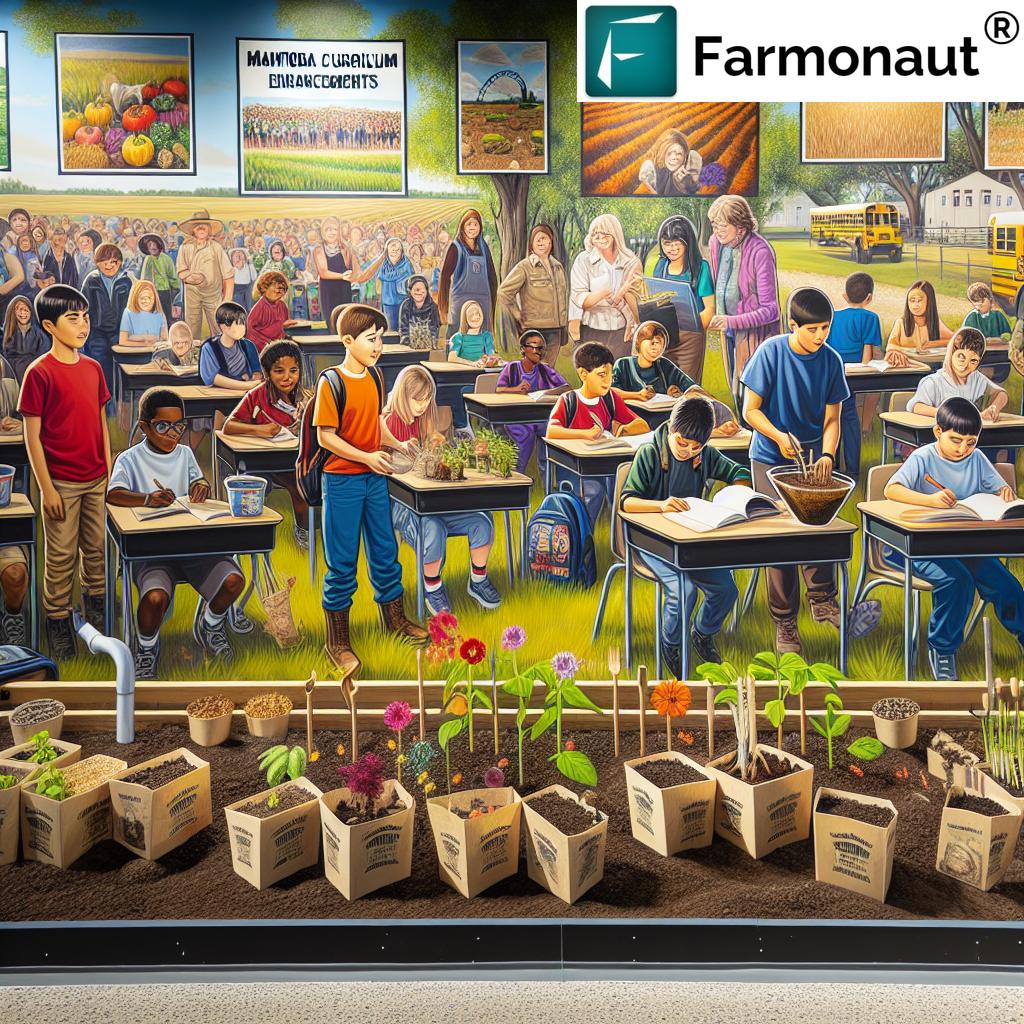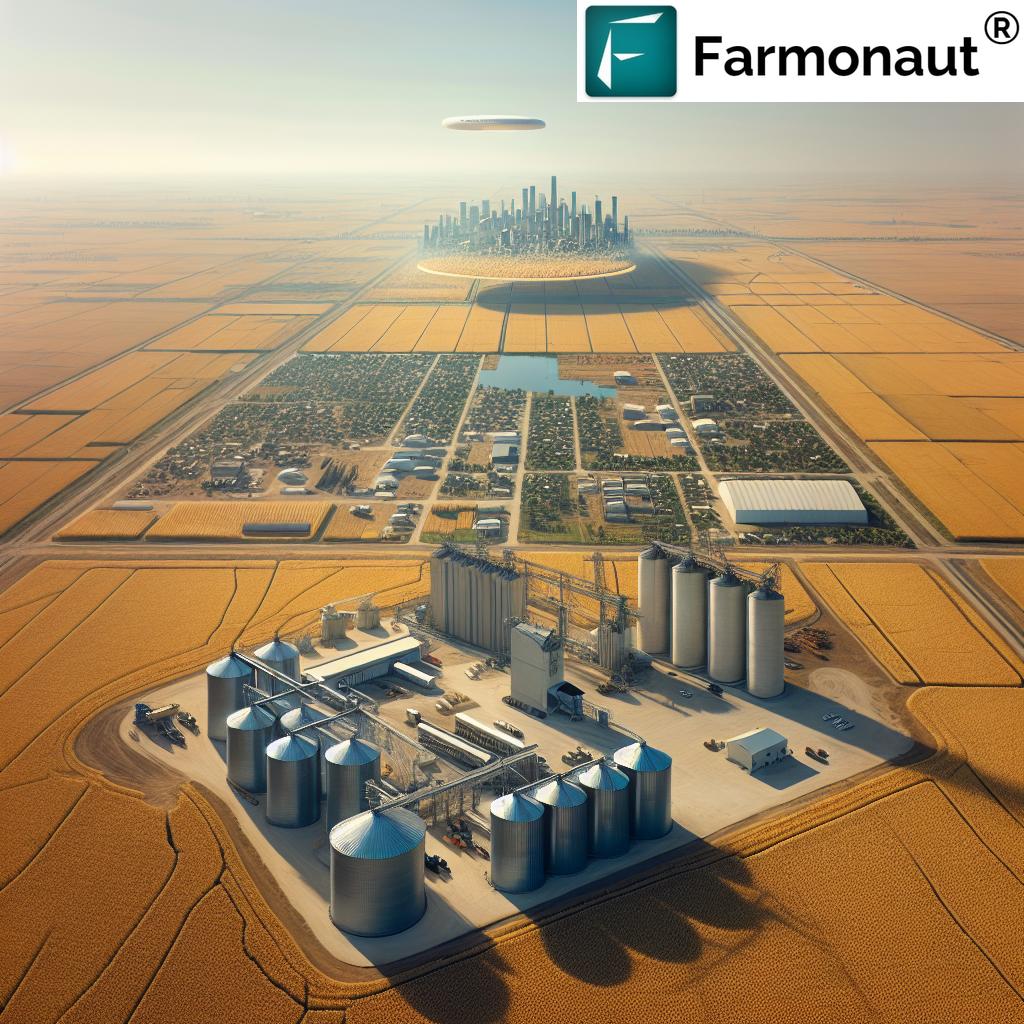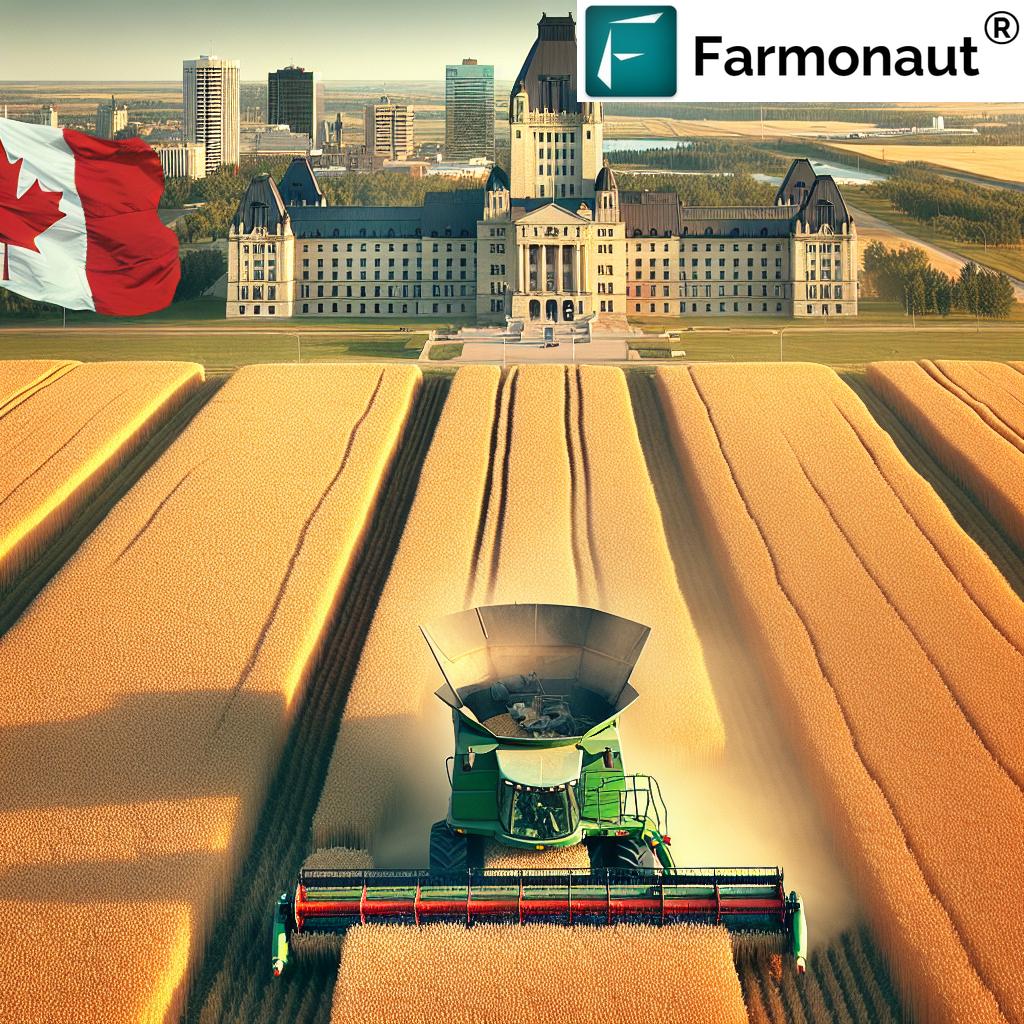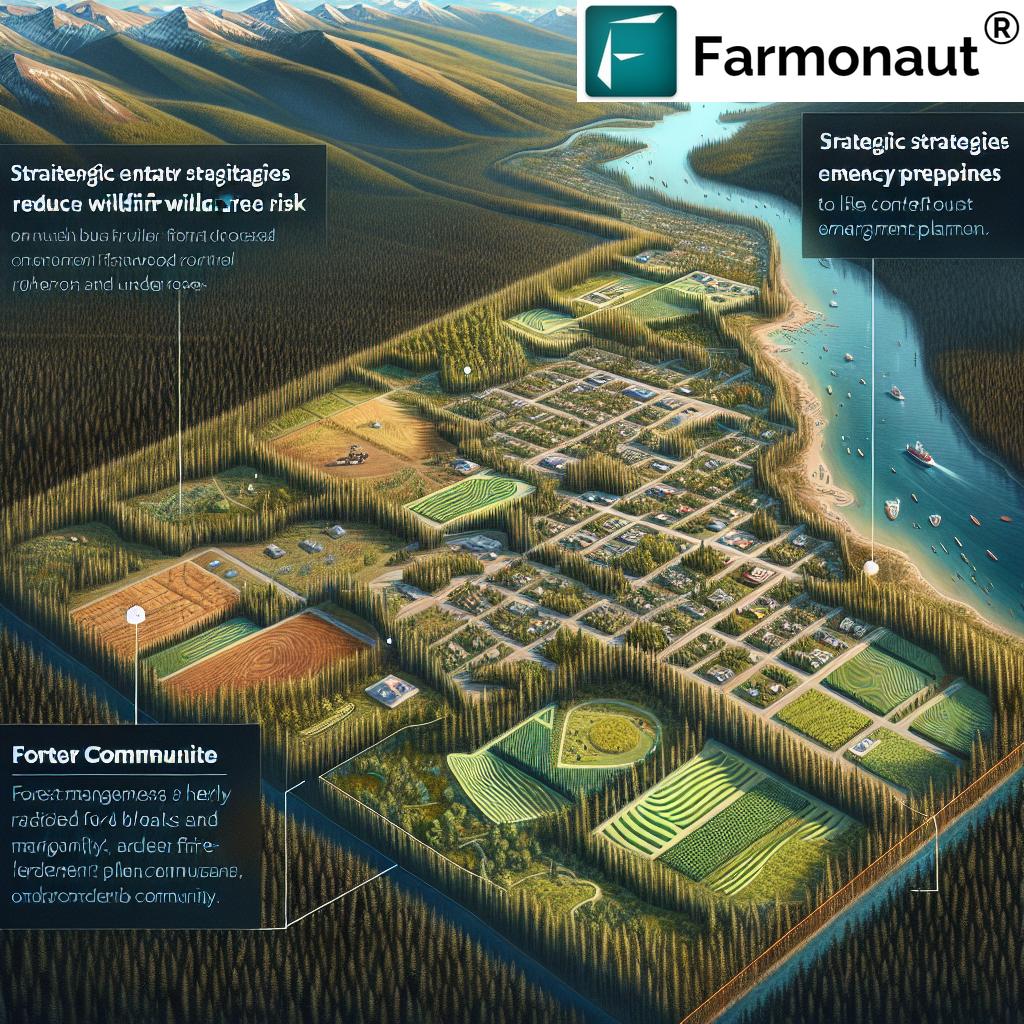Sustainable Dairy Farming in Canada: Innovative Tools for Net-Zero Emissions by 2024
“Canadian dairy farms aim to achieve net-zero emissions by 2050, revolutionizing sustainable agriculture practices.”
Welcome to our comprehensive exploration of sustainable dairy farming in Canada. As we delve into the innovative world of Canadian agriculture technology, we’ll uncover how the dairy industry is transforming to meet ambitious environmental goals. Our journey will take us through the cutting-edge practices and tools that are shaping the future of dairy production in the Great White North.
The Evolution of Canadian Dairy Farming
Canadian dairy farmers have long been at the forefront of agricultural innovation. Today, they’re taking on their most significant challenge yet: achieving net-zero emissions by 2050. This ambitious goal is driving a revolution in sustainable agriculture practices across the country.
From the rolling hills of British Columbia to the fertile plains of Quebec, dairy farmers are embracing new technologies and methods to reduce their environmental impact while maintaining the high quality of Canadian milk that we all know and love.

Precision Agriculture: The Game-Changer
At the heart of this agricultural revolution is precision agriculture. By leveraging advanced technologies, Canadian dairy farmers are optimizing their operations like never before. Let’s explore some of the key tools and techniques that are making this possible:
- Satellite-Based Crop Monitoring: Companies like Farmonaut are providing farmers with real-time data on crop health and soil conditions. This information is crucial for making informed decisions about irrigation and fertilizer use.
- AI-Powered Advisory Systems: Artificial intelligence is helping farmers predict weather patterns, manage resources, and optimize herd health.
- Drone Technology: Drones equipped with multispectral cameras are being used to survey large areas quickly, providing detailed insights into pasture conditions and animal welfare.
These precision agriculture tools are not only enhancing productivity but also promoting environmental stewardship across Canada’s dairy sector.
Soil Health Management: The Foundation of Sustainable Dairy Farming
Healthy soils are the cornerstone of sustainable dairy farming. Canadian farmers are adopting innovative practices to improve soil health, which in turn supports better crop yields and carbon sequestration. Here are some of the methods being implemented:
- No-Till Farming: This practice minimizes soil disturbance, preserving soil structure and reducing erosion.
- Cover Cropping: Planting cover crops between dairy feed crop rotations helps improve soil fertility and prevent nutrient runoff.
- Precision Nutrient Management: Using data from soil sensors and satellite imagery, farmers can apply fertilizers more efficiently, reducing waste and environmental impact.
By focusing on soil health, Canadian dairy farmers are not only improving their yields but also contributing to the fight against climate change by increasing the soil’s capacity to store carbon.
Water Conservation: Every Drop Counts
In the face of changing climate patterns, water conservation has become a critical aspect of sustainable dairy farming. Canadian farmers are implementing various strategies to reduce water usage and protect this precious resource:
- Drip Irrigation Systems: These systems deliver water directly to plant roots, minimizing evaporation and runoff.
- Rainwater Harvesting: Many farms are installing systems to collect and store rainwater for use during dry periods.
- Water Recycling: Advanced filtration systems allow farmers to reuse water from various farm processes, reducing overall consumption.
Through these water conservation efforts, Canadian dairy farms are setting new standards for responsible resource management in agriculture.
Regenerative Farming Techniques: Beyond Sustainability
Canadian dairy farmers are going beyond sustainability and embracing regenerative farming techniques. These practices aim to restore and enhance the entire ecosystem of the farm:
- Rotational Grazing: By carefully managing where and when cows graze, farmers can improve pasture health and soil fertility.
- Agroforestry: Integrating trees and shrubs into dairy farming landscapes helps improve biodiversity and provides additional benefits like wind protection and carbon sequestration.
- Composting: On-farm composting systems turn waste into valuable soil amendments, closing the nutrient loop and reducing the need for synthetic fertilizers.
These regenerative practices are helping Canadian dairy farms become net positive contributors to their local ecosystems.
Enhancing Biodiversity: A Holistic Approach
“Precision agriculture tools in Canada’s dairy sector enhance biodiversity while promoting environmental stewardship across 10,000+ farms.”
Biodiversity is a key indicator of a healthy agricultural ecosystem. Canadian dairy farmers are taking steps to promote biodiversity on their farms:
- Hedgerow Planting: Creating natural barriers with diverse plant species provides habitats for beneficial insects and wildlife.
- Wetland Conservation: Protecting and restoring wetlands on farm properties helps support diverse aquatic ecosystems.
- Pollinator Gardens: Dedicated areas for flowering plants attract bees and other pollinators, supporting both biodiversity and crop pollination.
By enhancing biodiversity, Canadian dairy farms are creating more resilient and sustainable agricultural systems.
Innovative Recycling Initiatives
Recycling is playing a crucial role in reducing the environmental footprint of dairy farms. Canadian farmers are implementing creative solutions to minimize waste:
- Plastic Recycling Programs: Many farms participate in programs to recycle plastic wraps and containers used in dairy operations.
- Manure-to-Energy Systems: Anaerobic digesters convert cow manure into biogas, providing renewable energy for farm operations.
- Upcycling Feed: By-products from food processing that would otherwise go to waste are being repurposed as nutritious feed for dairy cows.
These recycling initiatives are helping to close the loop on farm waste, turning potential pollutants into valuable resources.
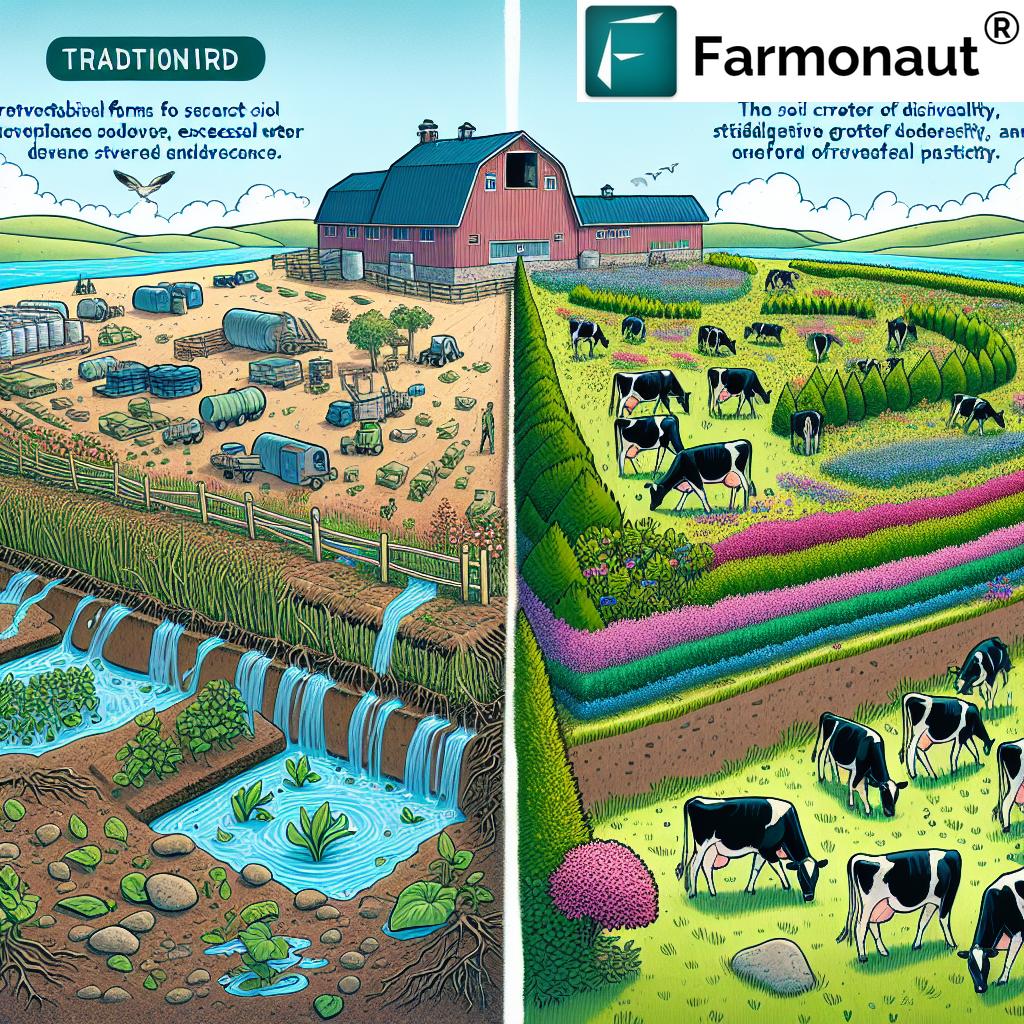
The Role of Technology in Sustainable Dairy Farming
Technology is at the forefront of the sustainable dairy farming revolution in Canada. Let’s explore some of the cutting-edge tools that are making a difference:
- Smart Collars: Wearable devices for cows that monitor health, activity, and even methane emissions.
- Robotic Milking Systems: These systems not only improve efficiency but also allow cows to be milked on their own schedule, reducing stress.
- Blockchain for Traceability: Implementing blockchain technology to ensure transparency and traceability in the dairy supply chain.
Companies like Farmonaut are at the forefront of this technological revolution, providing farmers with powerful tools for sustainable farm management. From satellite-based crop monitoring to AI-powered advisory systems, these technologies are helping farmers make data-driven decisions that benefit both their operations and the environment.
Carbon Footprint Reduction: A Multi-Faceted Approach
Reducing the carbon footprint of dairy farms is a complex challenge that requires action on multiple fronts. Canadian farmers are tackling this issue through various strategies:
- Energy-Efficient Equipment: Investing in modern, energy-efficient machinery for milking, cooling, and other farm processes.
- Renewable Energy Adoption: Installing solar panels and wind turbines to generate clean energy on-site.
- Feed Optimization: Using precision feeding techniques to reduce methane emissions from cattle while maintaining optimal nutrition.
By implementing these carbon reduction strategies, Canadian dairy farms are making significant progress towards their net-zero emissions goal.
The Economic Impact of Sustainable Dairy Farming
Sustainable practices aren’t just good for the environment; they’re also proving to be economically beneficial for Canadian dairy farmers. Here’s how:
- Reduced Input Costs: Precision agriculture and resource optimization lead to lower expenses for feed, water, and energy.
- Premium Pricing: Sustainably produced dairy products often command higher prices in the market.
- Government Incentives: Various programs offer financial support for farmers implementing sustainable practices.
The economic benefits of sustainable dairy farming are helping to ensure the long-term viability of Canada’s dairy industry.
Research and Innovation: Driving Sustainable Progress
Canada’s commitment to agricultural innovation research is playing a crucial role in advancing sustainable dairy farming. Key areas of focus include:
- Methane Reduction: Developing feed additives and breeding programs to reduce enteric methane emissions from cattle.
- Carbon Sequestration: Researching ways to enhance the carbon storage capacity of farmland through improved soil management practices.
- Water-Efficient Crops: Breeding dairy feed crops that require less water and are more resilient to climate change.
This ongoing research is essential for keeping Canadian dairy farming at the forefront of sustainability and innovation.
Collaboration and Knowledge Sharing
The journey towards sustainable dairy farming in Canada is a collaborative effort. Farmers, researchers, and industry organizations are working together to share knowledge and best practices:
- Farmer-to-Farmer Networks: Peer learning groups where farmers can share experiences and innovations.
- Industry-Academia Partnerships: Collaborations between dairy farms and universities to conduct on-farm research.
- International Exchanges: Canadian dairy farmers participating in global forums to share and learn about sustainable practices.
This culture of collaboration is accelerating the adoption of sustainable practices across the Canadian dairy industry.
Consumer Engagement and Transparency
Canadian dairy farmers recognize the importance of consumer trust and are taking steps to engage with the public and demonstrate their commitment to sustainability:
- Farm Tours: Many farms offer public tours to showcase their sustainable practices firsthand.
- Digital Storytelling: Using social media and websites to share the story of sustainable dairy farming with consumers.
- Product Labeling: Clear labeling that highlights sustainable production methods and environmental certifications.
By fostering transparency and open communication, Canadian dairy farmers are building stronger connections with consumers who value sustainability.
Farmonaut API | API Developer Docs
The Future of Sustainable Dairy Farming in Canada
As we look towards the future, the Canadian dairy industry is well-positioned to achieve its goal of net-zero emissions by 2050. The combination of innovative technologies, sustainable practices, and a commitment to continuous improvement sets a strong foundation for success.
Key areas to watch in the coming years include:
- Advanced Biotechnology: Further developments in feed additives and cattle breeding to reduce methane emissions.
- Artificial Intelligence: More sophisticated AI systems for farm management and predictive analytics.
- Circular Economy Models: Increased integration of dairy farms into local food systems and waste management networks.
The journey towards sustainable dairy farming in Canada is an ongoing process of innovation and adaptation. As new challenges arise, Canadian farmers will continue to lead the way in developing solutions that balance productivity with environmental stewardship.
Sustainable Dairy Farming Practices in Canada: A Comparison
| Farming Aspect | Traditional Method | Sustainable Practice | Environmental Impact |
|---|---|---|---|
| Soil Management | Annual tilling | No-till farming with cover crops | Increased soil carbon sequestration (up to 30% higher) |
| Water Conservation | Flood irrigation | Drip irrigation and rainwater harvesting | 40-60% reduction in water usage |
| Grazing Techniques | Continuous grazing | Rotational grazing | 20% increase in pasture productivity |
| Waste Management | Manure lagoons | Anaerobic digesters for biogas production | 75% reduction in methane emissions from manure |
| Energy Use | Grid-dependent electricity | On-farm renewable energy (solar, wind) | 50% reduction in farm’s carbon footprint |
Embracing Technology for Sustainable Dairy Farming
As we’ve seen throughout this exploration, technology plays a crucial role in advancing sustainable dairy farming practices in Canada. Tools like those provided by Farmonaut are empowering farmers with data-driven insights to make more informed decisions about their operations.
For those interested in leveraging these technologies for their own farming operations, Farmonaut offers a range of solutions:
Farmonaut Subscriptions
Frequently Asked Questions
Q: What is the main goal of sustainable dairy farming in Canada?
A: The main goal is to achieve net-zero emissions by 2050 while maintaining high-quality dairy production and ensuring economic viability for farmers.
Q: How are Canadian dairy farmers reducing their water usage?
A: They’re implementing drip irrigation systems, harvesting rainwater, and recycling water from various farm processes to minimize overall consumption.
Q: What role does technology play in sustainable dairy farming?
A: Technology, such as satellite-based crop monitoring, AI advisory systems, and precision agriculture tools, helps farmers make data-driven decisions to optimize resource use and reduce environmental impact.
Q: How are Canadian dairy farms addressing biodiversity?
A: Farmers are planting hedgerows, conserving wetlands, and creating pollinator gardens to enhance biodiversity on their properties.
Q: What economic benefits do sustainable practices offer to dairy farmers?
A: Sustainable practices can lead to reduced input costs, potential premium pricing for products, and eligibility for government incentives.
Conclusion
The journey towards sustainable dairy farming in Canada is well underway, driven by innovative technologies, research, and the commitment of farmers across the nation. As we’ve explored in this article, the transition to net-zero emissions is not just an environmental imperative but also an opportunity for economic growth and industry leadership.
From precision agriculture tools to regenerative farming techniques, Canadian dairy farmers are embracing a wide range of solutions to reduce their environmental impact while maintaining the high quality of their products. The collaboration between farmers, researchers, and technology providers like Farmonaut is accelerating this transformation, paving the way for a more sustainable and resilient dairy industry.
As consumers, we can support these efforts by choosing sustainably produced dairy products and staying informed about the innovative practices being implemented on Canadian farms. Together, we can contribute to a future where dairy farming not only meets our nutritional needs but also plays a positive role in environmental stewardship.
The path to net-zero emissions by 2050 is ambitious, but with the dedication and innovation we’re seeing across the Canadian dairy sector, it’s a goal that’s well within reach. As we look to the future, we can be confident that Canadian dairy farming will continue to lead the way in sustainable agriculture, setting an example for the world to follow.









